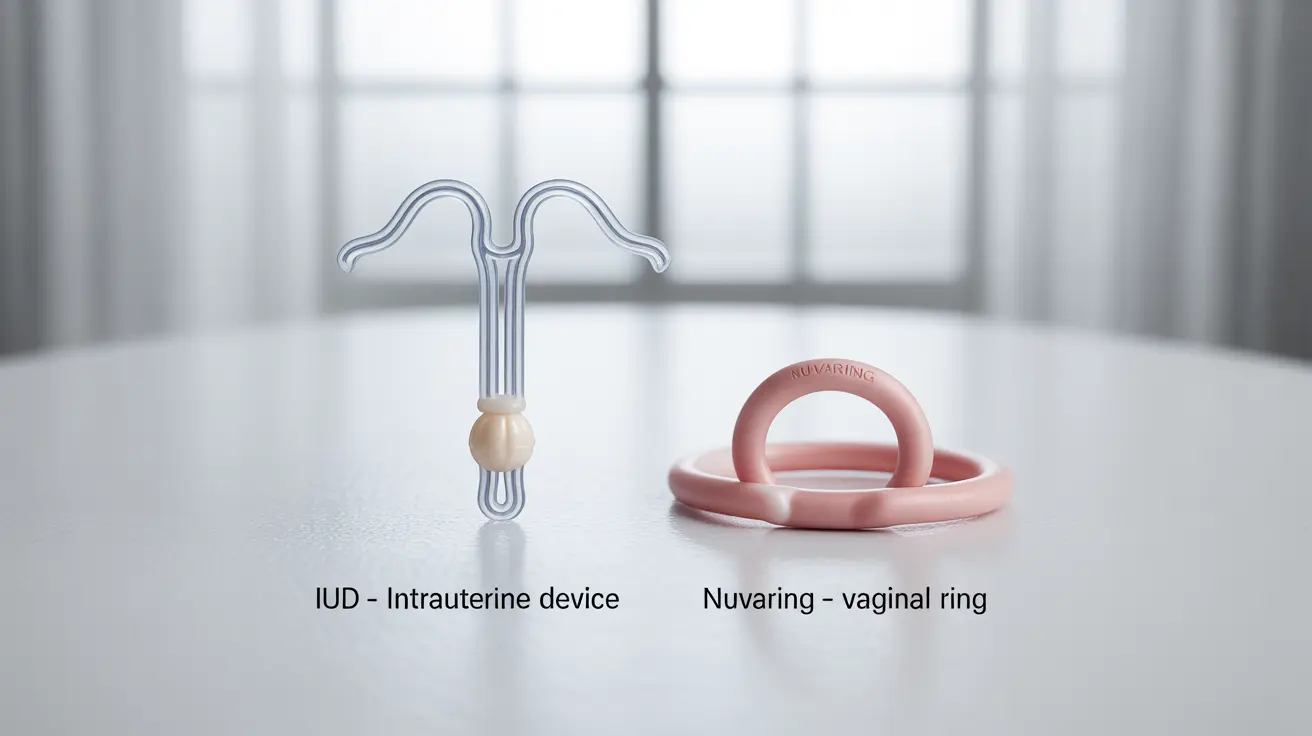When choosing the right birth control method, many women find themselves comparing different options to determine which best fits their lifestyle, health needs, and preferences. Two popular contraceptive choices that often come up in this decision-making process are intrauterine devices (IUDs) and the NuvaRing. Both offer effective pregnancy prevention, but they work in distinctly different ways and come with their own sets of benefits and considerations.
Understanding the key differences between these contraceptive methods can help you make an informed decision about which option might be right for your individual circumstances. From effectiveness rates and insertion procedures to side effects and convenience factors, there are several important aspects to consider when weighing IUD vs NuvaRing options.
Understanding How Each Method Works
IUD Mechanism of Action
An intrauterine device is a small, T-shaped device that a healthcare provider inserts directly into the uterus. There are two main types of IUDs available: hormonal IUDs that release progestin (such as Mirena, Kyleena, or Skyla) and the copper IUD (ParaGard) that contains no hormones. Hormonal IUDs work by thickening cervical mucus, thinning the uterine lining, and sometimes preventing ovulation. The copper IUD creates an environment that's toxic to sperm, preventing fertilization.
NuvaRing Function
NuvaRing is a flexible, transparent ring that you insert into your vagina yourself. It releases a continuous low dose of two hormones - estrogen and progestin - directly into your system. These hormones work to prevent pregnancy by stopping ovulation, thickening cervical mucus, and changing the uterine lining. The ring stays in place for three weeks, followed by a one-week break during which you typically experience a withdrawal bleed similar to a menstrual period.
Effectiveness Comparison
Both IUDs and NuvaRing are highly effective forms of birth control, but there are some differences in their pregnancy prevention rates. IUDs are considered one of the most effective reversible contraceptive methods available, with effectiveness rates exceeding 99%. Hormonal IUDs have a failure rate of less than 1%, while the copper IUD has a similar effectiveness rate of over 99%.
NuvaRing is also highly effective when used correctly, with an effectiveness rate of approximately 91-99%. However, its effectiveness depends heavily on proper and consistent use. Unlike IUDs, which work continuously without user intervention, NuvaRing requires you to remember to insert a new ring every month and remove it at the correct time.
Side Effects and Health Considerations
IUD Side Effects
The side effects of IUDs vary depending on whether you choose a hormonal or non-hormonal option. Hormonal IUDs may cause irregular bleeding, especially during the first few months after insertion. Some users experience lighter periods or their periods may stop altogether. Other potential side effects include breast tenderness, mood changes, acne, and headaches.
The copper IUD, being hormone-free, doesn't cause hormonal side effects but may lead to heavier, more painful periods and increased cramping. Both types of IUDs carry a small risk of perforation during insertion or expulsion from the uterus.
NuvaRing Side Effects
NuvaRing contains both estrogen and progestin, so users may experience side effects related to both hormones. Common side effects include vaginal irritation or discharge, breast tenderness, nausea, mood changes, and headaches. Some women may experience breakthrough bleeding or changes in their menstrual cycle.
Like other combined hormonal contraceptives, NuvaRing carries a slightly increased risk of blood clots, stroke, and heart attack, particularly in women who smoke or have certain risk factors. This risk is generally low for healthy, non-smoking women under 35.
Convenience and Lifestyle Factors
IUD Convenience
One of the main advantages of IUDs is their "set it and forget it" nature. Once inserted, they provide continuous protection for several years - ranging from 3-10 years depending on the specific type. This makes them an excellent choice for women who want long-term contraception without the need to remember daily pills or monthly insertions.
However, IUDs require a medical procedure for both insertion and removal, which some women find uncomfortable. The insertion process typically takes just a few minutes but may cause cramping and discomfort.
NuvaRing Convenience
NuvaRing offers a middle ground between daily pills and long-acting methods. You only need to think about it once a month, making it more convenient than daily contraceptives but requiring more attention than IUDs. The ring is designed to stay in place during normal activities, including exercise and sexual activity, though some couples may feel it during intercourse.
The ability to remove and reinsert the ring yourself provides more control over your contraceptive method, but it also means the responsibility for proper use rests entirely with you.
Cost Considerations
The upfront cost of an IUD is typically higher than NuvaRing, but when calculated over time, IUDs often prove more cost-effective due to their longevity. Many insurance plans cover both options, but coverage varies. NuvaRing requires ongoing monthly purchases, while an IUD represents a one-time expense that provides protection for years.
Choosing the Right Option for You
The decision between an IUD and NuvaRing should be based on your individual health profile, lifestyle preferences, and reproductive goals. Consider factors such as your comfort with hormones, desire for long-term versus shorter-term contraception, budget, and personal preferences regarding insertion procedures.
Women who want hormone-free contraception should consider the copper IUD, as NuvaRing contains hormones. Those who prefer not to have a medical procedure might lean toward NuvaRing, while women seeking the most effective, low-maintenance option might prefer an IUD.
Frequently Asked Questions
What are the main differences between IUD and NuvaRing birth control?
The primary differences lie in their placement, duration, and hormone content. IUDs are inserted into the uterus by a healthcare provider and last 3-10 years, while NuvaRing is self-inserted into the vagina monthly. IUDs come in hormonal and non-hormonal options, whereas NuvaRing contains both estrogen and progestin hormones.
Which is more effective: IUD or NuvaRing?
Both methods are highly effective, but IUDs have a slight edge with over 99% effectiveness compared to NuvaRing's 91-99% effectiveness rate. IUDs are more effective in typical use because they don't rely on user compliance, while NuvaRing's effectiveness depends on correct and consistent use.
What are the side effects of IUD compared to NuvaRing?
Hormonal IUDs may cause irregular bleeding, mood changes, and acne, while copper IUDs can lead to heavier periods and cramping. NuvaRing may cause vaginal irritation, breast tenderness, nausea, and carries a small increased risk of blood clots due to its estrogen content. Both methods can cause headaches and mood changes.
How do I choose between IUD and NuvaRing for birth control?
Consider your lifestyle preferences, hormone tolerance, desire for long-term versus short-term contraception, and comfort with medical procedures. Choose an IUD if you want long-lasting, low-maintenance protection or hormone-free options. Choose NuvaRing if you prefer monthly control over your contraception and don't mind self-insertion.
Can I use NuvaRing if I want a non-hormonal birth control like the copper IUD?
No, NuvaRing contains hormones (estrogen and progestin), so it's not a non-hormonal option. If you specifically want hormone-free birth control, the copper IUD (ParaGard) would be the appropriate choice between these two methods, as it provides effective contraception without any hormones.




